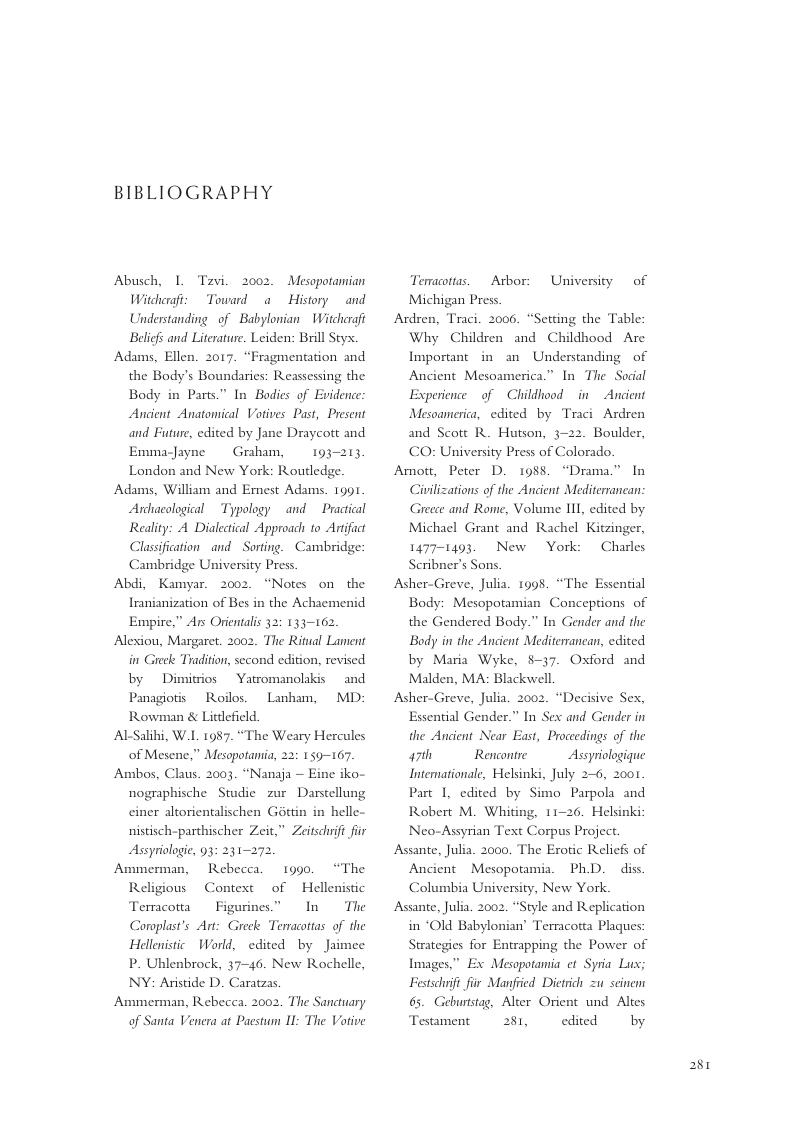Book contents
- Figurines in Hellenistic Babylonia
- Figurines in Hellenistic Babylonia
- Copyright page
- Dedication
- Contents
- Acknowledgments
- Author’s Note
- Introduction
- Chapter One A Question of Intimacy: Miniaturization and Figurines
- Chapter Two Fascination with the Tiny: Interacting with Figurines
- Chapter Three Three’s a Crowd: Spectatorship of Figurines
- Chapter Four Images of the Self: Identifying with Figurines
- Chapter Five The Global and the Local: Making Cultural and Social Choices with Figurines
- Conclusion: Life in Miniature
- Notes
- Bibliography
- Index
- References
Bibliography
Published online by Cambridge University Press: 19 December 2019
- Figurines in Hellenistic Babylonia
- Figurines in Hellenistic Babylonia
- Copyright page
- Dedication
- Contents
- Acknowledgments
- Author’s Note
- Introduction
- Chapter One A Question of Intimacy: Miniaturization and Figurines
- Chapter Two Fascination with the Tiny: Interacting with Figurines
- Chapter Three Three’s a Crowd: Spectatorship of Figurines
- Chapter Four Images of the Self: Identifying with Figurines
- Chapter Five The Global and the Local: Making Cultural and Social Choices with Figurines
- Conclusion: Life in Miniature
- Notes
- Bibliography
- Index
- References
Summary

- Type
- Chapter
- Information
- Figurines in Hellenistic BabyloniaMiniaturization and Cultural Hybridity, pp. 281 - 312Publisher: Cambridge University PressPrint publication year: 2020



